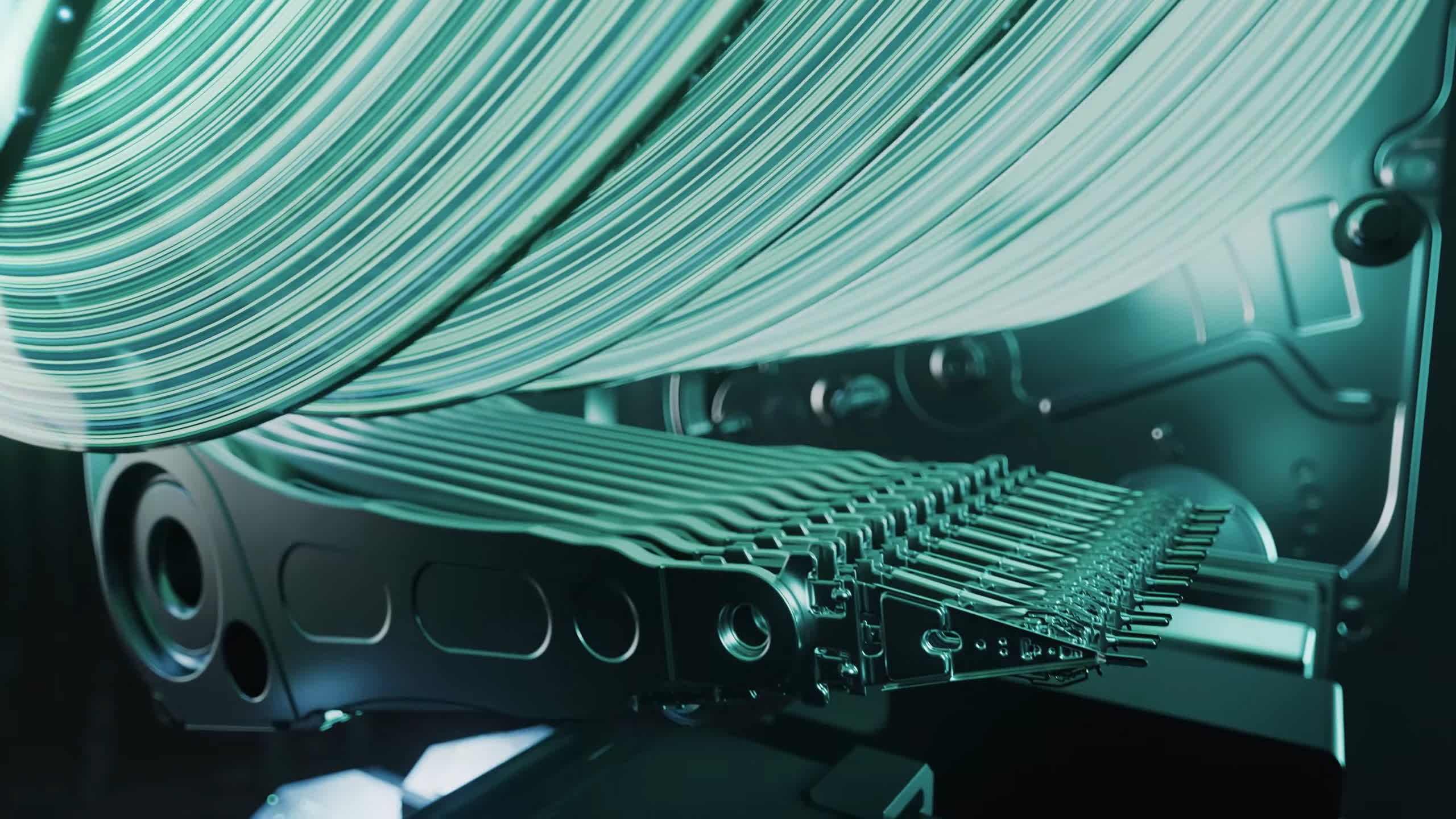Hot storage: Despite being surpassed by solid-state drives in terms of performance and overall reliability, magnetic hard drives aren't going anywhere anytime soon. Seagate is making every effort to enhance and innovate a storage technology first introduced in 1980.
Seagate is introducing its Mozaic 3+ hard drive platform, bringing 30 TB HDD units to the market and even larger storage capacities in the future. Mozaic 3+ is the company's implementation of Heat-Assisted Magnetic Recording (HAMR) technology, representing the next significant advancement in magnetic storage for unprecedented data archiving solutions in the hyperscale market.
Mozaic 3+ will be first used in Seagate's Exos product line, with 30 TB HDD models shipping in large quantities this quarter for cloud and HPC customers. HAMR recording utilizes a laser diode attached to each recording head to rapidly heat a tiny spot on the magnetic disk. This allows bits of data being written on the platter to become smaller and more densely packed while retaining the same magnetic and thermal stability.
Thanks to HAMR and other technological innovations, Mozaic 3+ hard drives boast an "unparalleled" areal density of 3 TB+ per platter. Larger areal densities (4 TB+, 5 TB+) are already included in the company's roadmap for the next few years. These additional innovations include Superlattice Platinum-Alloy Media, Plasmonic Writer, Gen 7 Spintronic Reader, and a 12nm Integrated Controller.
By adopting a heat-assisted recording solution, Seagate had to find new metal alloys for the media data being written on. Legacy alloys do not provide enough magnetic stability, so Mozaic 3+ hard drives implement an iron-platinum "superlattice structure" with significantly better magnetic coercivity of disk media. New, magnetically "harder" disks also required a new HAMR writer, which Seagate describes as a "marvel of miniaturization and precision engineering."
The nanophotonic laser included in the Plasmonic Writer subsystem can produce an "infinitesimal heat spot" on the media surface, so that digital data can be reliably written on it. The Gen 7 Spintronic Reader incorporates some unspecified "quantum technology" to provide the same reliability while reading the stored bits, Seagate explains.
Finally, the 12nm integrated controller is "efficiently" orchestrating all the storage tasks of Mozaic 3+ thanks to its system-on-a-chip design. The controller has been developed entirely in-house, Seagate says, and can deliver up to three times the performance compared to previous solutions.
Seagate highlights the importance of areal density improvements in magnetic hard drives for the data center business. Generative AI and other machine learning models need a lot of raw data to work as intended, Seagate CEO Dave Mosley said, and more companies are soon going to need larger storage capacities to put all that data on.
